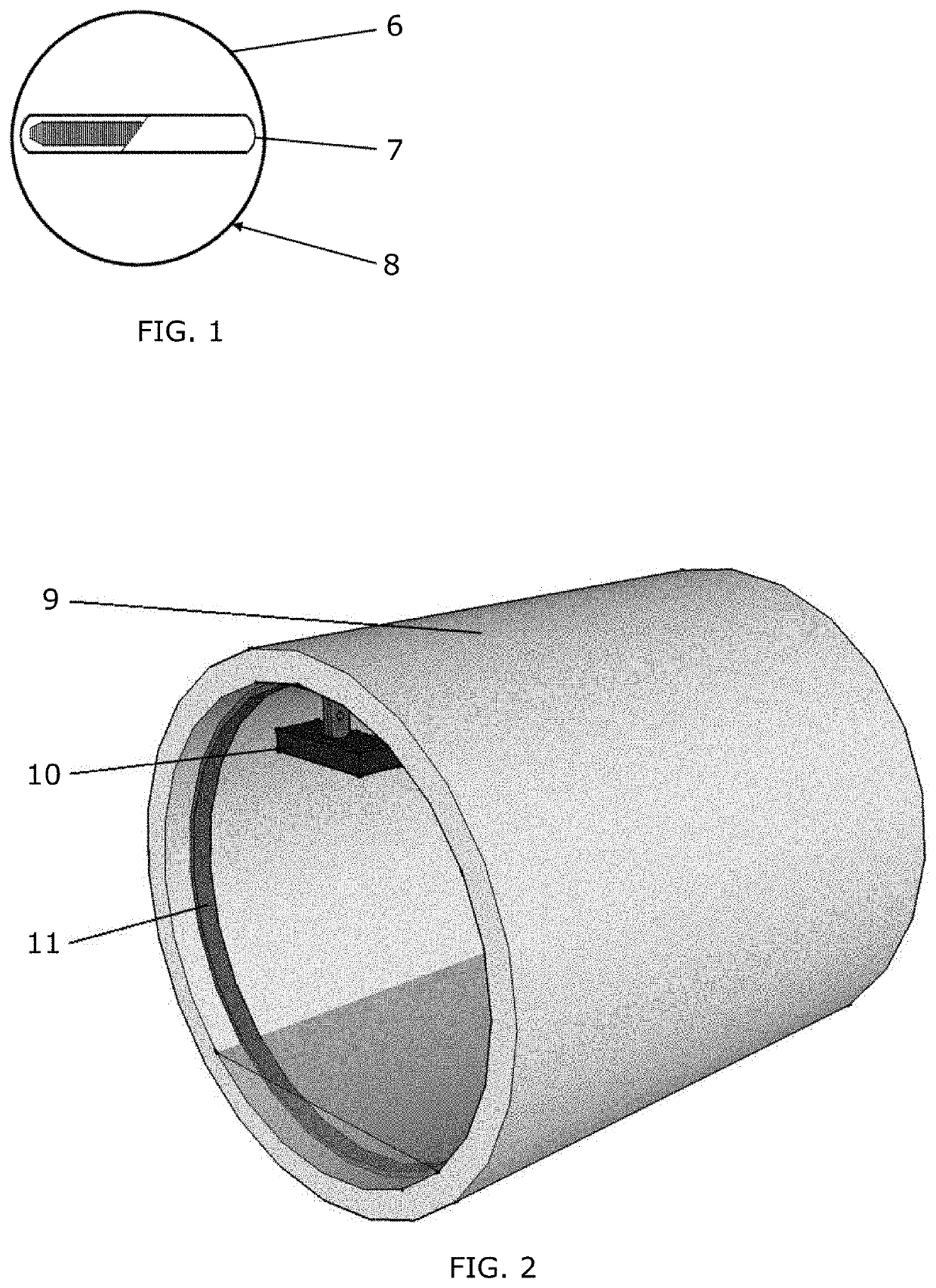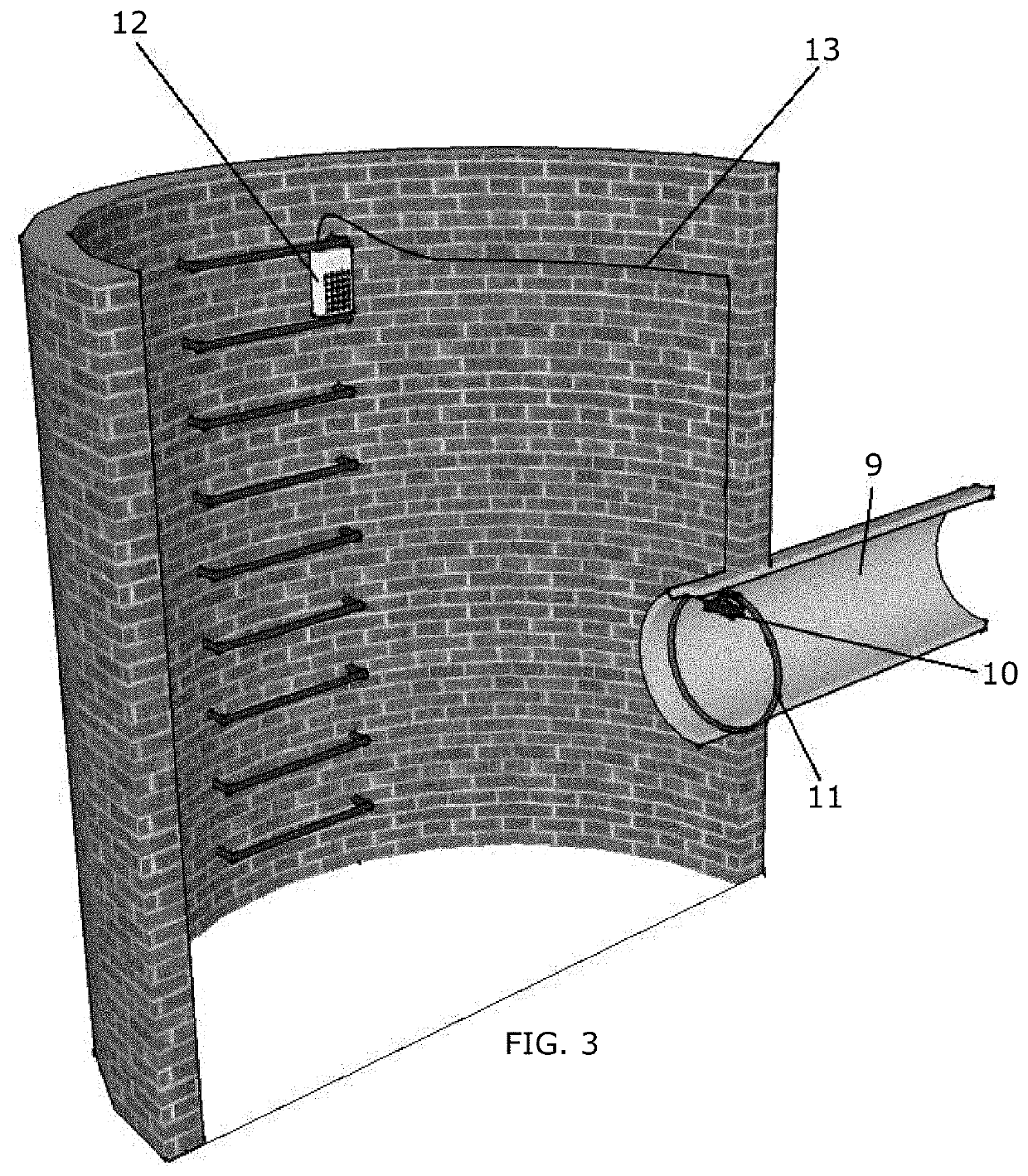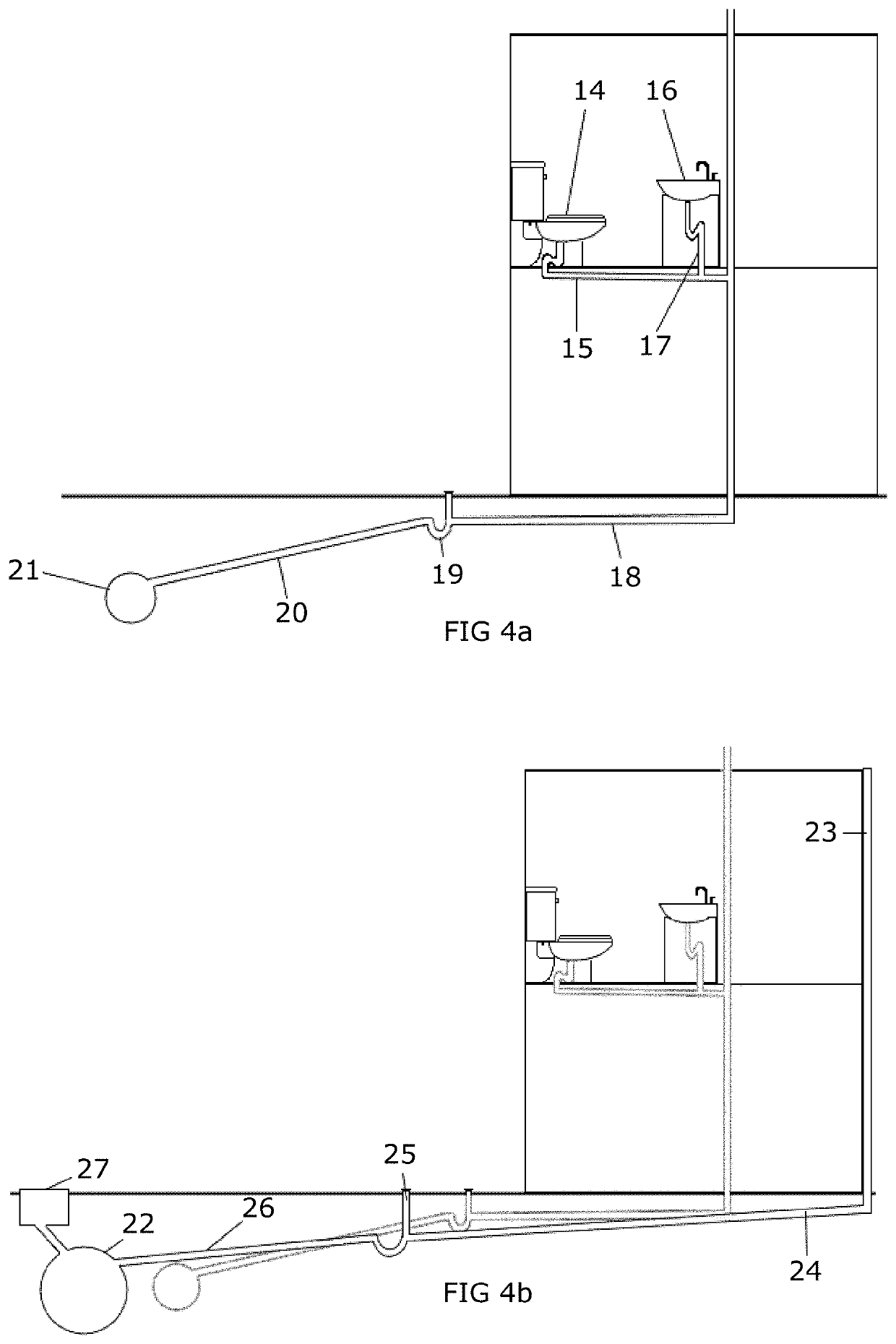Unfortunately defects and improper connections may be present in and among plumbing systems, sewer lateral pipes and sewer systems.
One type of defect is known as “cross-connection”, an undesirable condition in which there is a leak or
hydraulic connection between components of the sanitary and storm sewer systems.
For example, one or more
sanitary sewer lateral pipes may be improperly connected to a storm sewer.
Alternatively, storm sewer lateral pipes or other
stormwater drainage infrastructure may be improperly connected to a
sanitary sewer system.
Sanitary
sewage disposed in a home with a cross-connected plumbing system may not be conveyed to a
wastewater treatment
plant and may contaminate a storm sewer system that is not designed for sanitary
sewage.
As stormwater flow takes up space within the sanitary sewer system, the capacity of the sanitary sewer system to convey sanitary waste decreases, potentially resulting in
basement backups or sanitary sewer overflows.
Even if the additional stormwater flow can be conveyed without overflowing,
treatment costs for
wastewater treatment plants can increase, as the facility will have to treat a greater amount of flow than if only sanitary waste is collected and conveyed to the treatment works.
The dye testing process is labor-intensive as it usually requires at least two persons.
This feature of the dye testing method is disadvantageous, making it a time-consuming affair to sequentially test multiple fixtures within a property and impractical to conduct tests of multiple properties or locations within the same sewer system network simultaneously.
Moving the
work zone and opening additional manholes or other access points can be
time consuming and labor-intensive, as manhole covers are often found to be jammed with paving materials and debris.
Workers may incur the dangers of using striking, prying and lifting tools to open additional manholes.
Ladders, wet conditions and sewer gases such as
hydrogen sulfide and
methane are also potential hazards for observers that may enter the
confined space of a manhole to make observations for the presence of dye.
Another safety
disadvantage of dye testing is that suitable observation points such as manholes are often located within roads or other areas subject to vehicle or foot traffic.
Furthermore, at any time when a person is required to occupy an observation position in a road or other location where vehicles are operated, there exists the danger of the worker being struck by a vehicle.
Closing lanes or entire roads to safely accommodate dye testing observers can cause inconvenience for motorists and may impede emergency vehicles.
Environmental conditions such as bright
daylight can cause large differences in contrast between the ambient outdoor environment and the sewer system being tested, which is typically much darker.
Flashlights are often used to illuminate the sewer
observation point, but on bright days it may be difficult to see the dye unless a relatively large quantity of dye is used.
Although dyes used for sewer
system testing are typically non-toxic, dyes are expensive and have other undesirable characteristics such as the potential for
staining surfaces and the unintended or unanticipated observation of dye at other non-testing locations.
Cameras can be impeded by pipe geometry, various types of pipe defects, or obstructions caused by tree roots or other debris.
These advanced technologies tend to require specialized equipment and skilled operators and are currently prohibitively expensive for use in plumbing system and sewer lateral pipe investigations.
As the need to inspect and test sewer lateral connections grows with tightening environmental regulations and deterioration of older sewer systems, owners and operators of sewer systems may find themselves needing to test a large number of sewer connections over a large geographical service area.
It is possible to use different colors of dye to marginally increase the number of fixtures that can be tested concurrently, but this approach is limited by the number of colors of available dye that can be discriminated by an observer and is still subject to the disadvantages described above in terms of sequential testing.
Neither dye testing nor camera inspection can yield the type of test results that can be quickly and readily integrated into an automated
information technology workflow.
From the preceding information, it is clear that there are significant disadvantages to existing methods for testing plumbing systems, sewer lateral pipes and sewer systems under some test conditions and for certain testing objectives.
 Login to View More
Login to View More  Login to View More
Login to View More 


